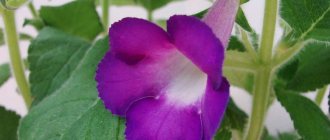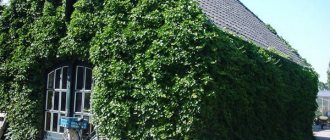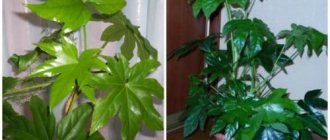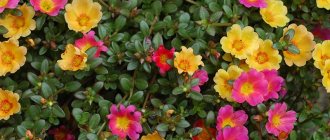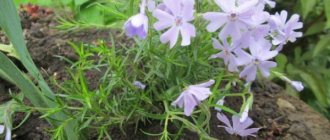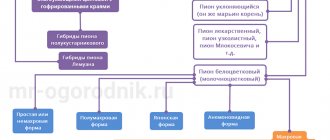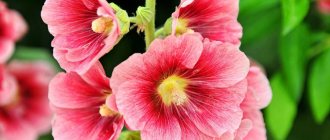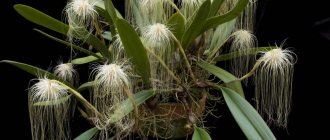Today, landscape designers and gardeners have access to cypress trees with a wide variety of crown shapes, with needles of golden, yellow-green, light green, dark green and blue. Some species and varieties are highly winter hardy. However, many require high air and soil humidity. In general, in central Russia, especially its continental part, it is wiser to plant dwarf forms and varieties that can simply be protected from frost and sunburn and provided with proper care (1).
But even in the harsh conditions of Siberia, you can grow cypress trees, because dwarf varieties grow well in containers and overwinter under a roof. However, even in the middle zone, a pot of cypress will decorate any window sill.
Types and varieties of cypress
The genus Cypress has 5 species. However, not all of them are frost-resistant enough to decorate gardens even in central Russia.
Lawson's cypress
Almost all garden centers in Central Russia offer Lawson cypress (Chamaecyparis lawsoniana) seedlings. These are relatively tall shrubs, very similar in appearance to thuja: conical crown shape, dense branches with soft needles, small round cones. Unfortunately, the best varieties of this species are characterized by average winter hardiness and can withstand frosts not lower than -29 ° C (2).
Varieties with blue and golden colored needles are very popular. Lawson cypress trees decorate rocky gardens and retaining walls, front mixborders and act as accents against the background of the lawn.
Lawson's cypress. Photo: globallookpress.com
Globosa . This variety is distinguished by its compact size: height 1.5 m, crown diameter barely exceeds 0.6 m, but due to the hanging ends of the young shoots, the crown looks spherical. Young gray-green needles acquire a dark color over time.
Blue Surprise . It is distinguished not only by the blue color of its needles, but also by its narrow columnar crown. When planted in a sunny location in summer, the needles take on a purple tint. The annual growth is quite large - 15 - 20 cm, but in general the tree does not exceed 3 m. The variety has received many international awards.
Sunkist . Valued for its compact size, slow growth, soft green needles with bright yellow tips of the shoots. Such bright colors appear only in sunny places. But even there, this dwarf shrub turns green by winter (2).
Cypress pea
Pea cypress (Chamaecyparis pisifera) is considered the most unpretentious and frost-resistant species among the entire genus. It grows slowly.
Widely used in landscape design as an accent plant, companion plant for prostrate junipers, heathers and rhododendrons. Dwarf varieties fit perfectly into rockeries and decorate flowerpots in the front areas of the garden (1).
Cypress pea fruit. Photo: pixabay.com
Boulevard . One of the most popular cypress trees, it can withstand frosts down to -29 °C. A slow-growing shrub with a narrow conical crown, silver-blue needles, and can reach a height of 3 m.
Baby Blue . A beautiful compact shrub with silver-blue needles and a spectacular ovoid crown shape. Slow growing, does not exceed 1.5 m in height.
Filifera nana. Valued for its beautiful dense spherical crown with bluish-green needles. It barely reaches 1 m in height. It is most often used for growing in containers with shelter for the winter. It will be paired with the Filifera aurea nana with golden needles and a spherical dense crown.
Filifera gracilis (Filiferagracilis). A very spectacular shrub up to 3 m high with dark green needles. Its thin drooping branches form a weeping crown. The variety is often called filamentous.
Dumb cypress
Blunt cypress (Chamaecyparis obtusa) is also known as hinoki. It is a large tree up to 25 m high. Widely distributed in Japan. In cultivation, this species rarely grows above 5 m. It has characteristic bright green needles with rounded tips and round cones. Most varieties sold on our market are considered frost-resistant, i.e. withstands frosts down to -29°C. However, plants require shelter in the first 3 - 4 years after planting, mulching of the root system, protection from cold winds and sunburn.
Cypress is stupid. Photo: commons.wikimedia.org
Draht . A popular variety with emerald-colored needles. The crown is spherical, thick, long shoots look like wire to which needles are screwed. An adult plant reaches 3 m in height. It shows all its unusual beauty only in full light and sufficient moisture.
Nana Gracilis . A very beautiful spherical cypress with dark green needles has been decorating many European gardens and parks for more than 100 years. With age, the shape of the crown elongates and takes on the shape of a cone.
Pygmy (Pygmaea). The variety was exported to Europe at the end of the 19th century from Japan. It grows very slowly and has spreading branches. The needles are green with a bronze tint.
Nootka cypress
Nuntka cypress (Chamaecyparis nootkatensis) is a slow-growing species from North America with a narrow or pyramidal crown and drooping branches. It reaches a height of 35 - 45 m. This species exhibits cracking and separation of the bark from the trunk. Young seedlings do not tolerate frosts below -25°C.
In landscape design they are used as solo plants.
Nuntkan cypress. Photo: commons.wikimedia.org
Glauca . A large, spectacular tree up to 20 m high with blue scaly needles.
Pendula . The branches of this tall variety form a weeping crown with dark blue needles. Differs in slow growth.
Jubilee . It is distinguished by a slender columnar crown, reaching a height of 15 m and a width of 5 m. It has drooping branches and bright green needles.
Description of the plant
The genus Cypress (Chamaecyparis) belongs to the Cypress family. The natural distribution of the plants covers North America and East Asia, where they grow in humid climates with rainy summers.
Cypress trees are similar to cypress trees, but differ in flatter branches and smaller cones. They are also often confused with thuja, but the species are very easy to distinguish. Cypress trees have expressive, pointed scales that separate from the shoots. A white wax pattern is clearly visible on their underside. Plants can also be distinguished by their cones, which are more spherical in cypress trees than in thujas.
These coniferous plants are suitable for classic gardens of English, French or Italian styles. Plants are beautifully presented as a natural fence or hedge. Dwarf varieties are very elegant ground cover plants. Most varieties tolerate low temperatures well and rarely get sick. Plants are green and decorative all year round.
Botanical characteristics of cypress:
- Shape – trees or coniferous shrubs with a conical crown. The apical shoot is often drooping.
- The bark is thin, smooth, and often peels off in narrow strips.
- Shoots - the youngest ends of the shoots are fan-shaped in one plane and flattened.
- Leaves – young leaves are needle-shaped, mature leaves are scaly, growing crosswise in 4 rows.
- Fruits . Male cones (strobilae) are red (in the species Ch. Lawsonian and Ch. Obtus) or yellow, female cones are covered with a waxy coating, first greenish-violet, then woody, brown. Oval or spherical female strobili with a diameter of 4-14 mm mature 6-8 months after pollination. The cones fall off as soon as the seeds disperse.
Cypress planting
The best time to plant cypress in the garden is the second half of April. Over the summer, he manages to adapt and prepare for the test of frost. It is better to dig the planting hole in advance; its diameter should be 60 cm, depth at least 80 cm, since heavy soils require a good layer of drainage materials, and light soils require a moisture-retaining clay cushion. For planting, prepare a mixture of leaf humus, garden soil, soil for conifers and river sand.
Before planting, the seedling along with the container is placed in a growth stimulator solution for 3 - 6 hours. Plant the cypress tree so that the root collar is 2 - 3 cm above the soil level. After abundant watering, the soil will settle, drawing the seedling deeper. To maintain soil looseness and moisture, the tree trunk circle is mulched with bark or pine sawdust.
Tupolis - endemic to the Japanese islands
Cypress obtuse, or blunt-leaved, is of Japanese origin. In wild conditions, the trunk acquires a girth of up to 2 m. The height in the natural environment is up to 50 m. It is distinguished by light brown smooth bark, the branches are highly branched and tilt downwards. The needles are pressed to the stems. The species can be identified by the special color of the needles: they are shiny, green or yellow-green above, and covered with white stripes below. There are about 130 varieties, and they are usually not adapted to cold winters.
In the areas you can most often find:
- Sanderi is a dwarf form of a blunt-leaved species. The branches of this representative are straight, horizontal, and characterized by uneven thickness. The bluish-green crown turns purple in winter. Develops slowly.
- Erica is a slow-growing dwarf (1.3 m). It has a wide pyramidal shape. The branches are lush, covered with bluish needles.
Among all the variety of species, it is worth noting the mourning cypress, the beloved Formosan cypress. Descriptions of unusual hybrids can be found in special catalogs and you can choose a specimen to suit your taste, taking into account the characteristics of your garden.
Video about using different varieties to decorate flower beds.
Caring for cypress
Caring for cypress trees is simple: regular watering, sanitary pruning, fertilizing in the first 2 - 3 years after planting. The most labor-intensive thing is winter shelter from sunburn and cold winds in frosty winters. To maintain the shape of the crown and protect it from breaking during the winter, it is recommended to tie the crowns, pressing the branches to the trunk.
When choosing a planting site, you should take into account natural protection from cold winds and the absence of stagnant water and cold air. Cypress trees do not tolerate prolonged heat, so it is better to plant them near bodies of water.
Priming
Cypress grows better on well-cultivated light and fertile, sufficiently moist soils with a neutral or slightly acidic reaction. Despite the fact that the plant is moisture-loving, it does not tolerate waterlogging.
Lighting
Cypress is light-loving, even a slight shade reduces the intensity of the color of the needles, especially varieties with a golden or amber crown. However, it is important to place the plants so that they are protected by buildings or large trees from the prevailing winds in winter.
Watering
The root system of a cypress tree grows in breadth, not in depth. Therefore, it needs regular watering. In the first 2 - 3 years, cypress trees need to be watered once a week during dry periods, pouring at least 10 liters under a bush or tree. In the evening or morning, water the plants at least once a week.
In autumn, cypress trees need moisture-recharging irrigation - 20 - 30 liters for dwarf varieties, 70 - 100 liters for plants of medium height.
Fertilizers
When planting, use complex mineral fertilizer at the rate of 200 - 300 g per planting hole. Do not use wood ash or other alkaline fertilizers.
Feeding
In the spring, cypress trees are fed with any nitrogen-containing fertilizer for conifers (50 - 100 g per plant), and at the end of August - with phosphorus-potassium fertilizer (1 teaspoon of potassium monophosphate per plant). Before and after applying fertilizer, the soil is watered, and dry fertilizers are embedded to a depth of 5 - 10 cm.
If the plants are damaged during wintering, in April-May the crown is sprayed twice with Epin solution.
Priming
Cypress grows better on well-cultivated light and fertile, sufficiently moist soils with a neutral or slightly acidic reaction. Despite the fact that the plant is moisture-loving, it does not tolerate waterlogging.
Pea-bearing
Chamaecyparis pisifera is a tree 25–30 m high, in rare cases reaching 50 m. The crown is cone-shaped or narrow pin-shaped. The branches grow horizontally, flat, hanging, densely covered with needles. The bark is smooth, coming off in thin stripes, red with a brown or bluish tint. The needles are adjacent, with spaced tops, dark green in color, have white spots and stripes below, and emit a distinct smell.
Male pea cones consist of 6–10 pairs of brownish pollen sacs. There are many female ones being formed. They are spherical in shape, up to 0.8 cm in diameter, brown with a dark or yellowish tint, and grow on short petioles. There are 8–12 soft seed scales, 1–2 winged seeds are formed under each.
The branches grow horizontally, flat, hanging, densely covered with needles.
Varieties of pea cypress:
- ‚Aurea‛;
- ‚Boulevard‛;
- ‚Filifera‛;
- ‚Plumosa‛;
- ‚Squarrosa‛.
Boulevard (Chamaecyparis pisifera "Boulevard" ) is used as an ornamental shrub or tree. The height is approximately 5 m. The crown is pin-shaped, symmetrical. The needles are awl-shaped, curved inward. The needles are silver-blue in summer, grayer in winter. At first the variety grows slowly, then growth accelerates. On average, the plant grows by 10 cm per year. Growing requires good lighting, fertile and moist soil. Winter hardiness for Boulevard cypress trees is quite low; protection from freezing is required.
Cypress propagation
Cypress trees are propagated in three ways.
Seeds. This method does not allow preserving varietal characteristics and requires a lot of labor and time. Seeds need to be fresh, having undergone long-term cold stratification. Sow them in the spring in a warm room, regularly watering and adding light. With the onset of warm weather, the seedlings are planted in a growing bed.
By cuttings. They are cut in April, and for columnar and spherical varieties they are taken from vertically growing shoots, and for creeping forms - from the lateral ones. The needles are removed from the bottom of the cutting. The cut is dusted with Kornevin powder and planted in pots or boxes at an angle. Plantings are covered with plastic wrap for 3 months. Then, over the course of a week, the film is gradually removed and watering and fertilizing are provided until autumn. In spring, seedlings are planted in a schoolhouse.
By layering. This is how creeping cypress varieties are propagated. Select the lower stem, make a shallow cut at the bottom with a grafting knife, and insert a pebble or thin bamboo stick into it. They are laid on the ground, pinned and covered with earth. Then pour a layer of mulch 7-10 cm thick. The plant is watered regularly. At the end of summer, the shoot is cut off from the tree and left until spring. Then they dig it up and plant it in a permanent place.
Home care
Lighting
The level of lighting depends on the type and variety of cypress. Plants with bright needles need more light than varieties with muted shades. Lack of lighting leads to loss of decorative color.
However, the general rule for cypress trees is to spend a long time in the light. The light should be diffused or even shaded. The tree does not tolerate direct sunlight.
Temperature
Domestic cypress trees thrive in moderate temperatures in the range of 18-20 degrees Celsius. The upper limit of their endurance is 25 degrees, the lower 5.
Fresh air is very important for the plant. Cypress loves ventilation, it likes open windows and the breeze.
Watering and humidity
When keeping the cypress tree at a moderate temperature, watering once every three days is sufficient. If the room temperature is below 18 degrees, then watering should be reduced. The soil in the pot should always be slightly moist, so do not fill the pot with large quantities of water. Overwatering can lead to the death of the tree.
Water for irrigation should be purified, settled and cool. During hot periods, crushed ice can be used instead of water.
Growing cypress requires moderate humidity of 60%. If the air in the room is too dry, then you should use humidifiers. The spraying procedure is also very useful for coniferous plants.
Priming
Cypress needs soil with a high level of acidity. The best option is a ready-made substrate for conifers or rhododendrons.
An option for making your own substrate is a mixture of coarse sand, leaf and turf soil in proportions of 1/4/2.
The bottom of the container should be equipped with a drainage layer of broken brick, expanded clay or small pebbles.
Containers for growing cypress trees should be tall, spacious and made exclusively from natural materials (ceramics, wood, stone).
Fertilizers
The plant should be fed only during the growing season (spring-summer) with special liquid mixtures for coniferous plants. Fertilizers are applied no more than once a month. During the autumn-winter period, fertilizing should be stopped.
Trimming
There is no need to trim or shape the cypress tree. The tree grows very slowly and suffers any injury painfully.
An exception to this rule is cypress trees grown as bonsai.
In this case, pruning is carried out according to the rules for caring for this type of tree.
Transfer
The transplantation procedure is carried out only by transshipment and only in relation to young, intensively growing trees.
Mature cypress trees cannot be replanted. It is enough just to update the top layer of soil in the pot once a year and systematically loosen the soil.
Cypress diseases
Brown Schutte. It appears in the spring on branches that have wintered under snow, in the form of a whitish coating and darkening of the needles.
Copper and sulfur preparations are effective against the disease.
Late blight. This disease quickly affects the plant, first causing fragility of the needles and wilting of the shoots. If left untreated, the measles then become infected and the plant dies.
Prevention and treatment consists of treating the plant and soil in the tree trunk with Ridomil Gold (3).
Fusarium. It is characterized by rotting of the roots and the gradual spread of rot throughout the plant. If the needles turn yellow and the bark acquires a brown tint, then there is a high probability of fusarium disease.
To prevent infection, the soil is regularly loosened. This helps prevent congestion. Planting material and tools are disinfected, and the shoots are treated with Fundazol.
Secrets of success
The container for Cypress (if we are talking about growing indoors) is selected taking into account a fairly developed root system. It is best, especially for adult specimens, to buy clay pots. They are heavy, so they will not allow the plant to roll over under its own weight.
IN THE PHOTO: Cypress 'Teddy Bear' feels great in a clay pot.
Cypress loves well-drained, well-moistened soil. At the same time, you cannot flood it and turn the substrate into a swamp. But dry soil is also harmful for Cypress. As soon as the top layers of soil begin to dry out, you need to immediately start watering. The watering rate is 8–10 liters. water per plant. During drought, the amount and frequency of moistening the soil should be doubled.
If you need to replant Cypress, it is recommended to do this in the spring to minimize stress (at the same time, dry branches are sanitized). When replanting a bush, carefully examine its root system.
If the previous container was too cramped and some areas of the roots died, they must be removed. This will improve the health of Cypress and slightly restrain its growth, thereby ensuring the desired compactness.
When warm days arrive, Cypress leaves its dormant state and begins to develop more intensively. During this period, it is necessary to “support” it with a complex fertilizer (for example, mineral fertilizer “For conifers” containing humates). The fertilizer is applied diluted (according to the instructions) into the soil, which must first be loosened. Garden cypress trees are fed with complex fertilizer for conifers with a low NPK content in an amount of 100 to 150 g per m2. It is scattered near the tree trunks and embedded in the soil.
Cytovit, Zircon, Epin can be used as immunostimulants for Cypress.
Cypress pests
Spider mite. It attacks cypress trees and multiplies rapidly in hot, dry weather. It leaves punctures on the needles and entwines the branches with cobwebs.
Affected branches are cut out and burned. In case of severe damage, the drugs Akarin, Actellik and Fitoverm are used (3). In the initial stage of infection, spraying with a soap solution or mineral oil is recommended.
Aphid. This pest causes shoots to dry out. It produces several generations over the summer; if measures are not taken, it can destroy young cypress trees.
For prevention, at the beginning of the warm period, plants are sprayed with a solution of green soap. When infested with aphids, plants are sprayed 2-3 times during the summer with Decis, Komandor and Fitoverm (3).
Pests and diseases of the coniferous plant Chamaecyparis
Cypress, when properly cared for, is usually less susceptible to attack by pests and most diseases, although problems may arise.
Root rot and leaf scorch are common, but both are easily preventable problems. Prevent root rot by providing proper drainage, and avoid leaf scorch by sheltering the tree from wind.
If scale insects become a problem, scrape them off with a knife or cover them with rubbing alcohol. Mites also sometimes visit dwarf cypress trees, but they can usually be removed and controlled by simply spraying the tree with water.
Popular questions and answers
We asked agronomist Oleg Ispolatov - he answered the most popular questions from summer residents.
Which cypress trees are the most frost-resistant?
Many varieties of cypress have sufficient frost resistance to withstand short frosts down to -29 ° C. Therefore, buy plants only from reliable garden centers, where the type, variety and degree of frost resistance of a particular seedling are clearly indicated on the label. I would recommend starting to grow these plants in the Moscow region with the blunt cypress variety Pygmy.
How to use cypress in landscape design?
Cypress trees are actively used in creating gardens and parks due to the fact that they have a large number of shapes and varieties, which differ not only in the color of the needles, but also in the height, shape and size of the crown. This culture is equally good both in compositions with other coniferous and evergreen crops, and with other ornamental plants. It fits well into rocky and water gardens, picturesque mixborders and formal parterres.
Why does cypress dry out?
The appearance of dry needles and branches is not always caused by pest activity. Often the cause is a lack of moisture in the soil and air. During long periods of dry weather in the summer, it is important to ensure that the plants are well watered and hosed down. It is equally important to provide the plants with water for the winter and protect the plants from sunburn, which can also cause the cypress tree to dry out.
Sources
- Stupakova O.M., Aksyanova T.Yu. Compositions of perennial herbaceous, woody coniferous and deciduous plants in urban landscaping // Conifers of the boreal zone, 2013 https://cyberleninka.ru/article/n/kompozitsii-iz-mnogoletnih-travyanistyh-drevesnyh-hvoynyh-i-listvennyh-rasteniy- v-ozelenenii-gorodov
- Gerd Krussman. Coniferous species. // Moscow, Timber Industry, 1986, 257 p.
- State catalog of pesticides and agrochemicals approved for use on the territory of the Russian Federation as of July 6, 2022 // Ministry of Agriculture of the Russian Federation https://mcx.gov.ru/ministry/departments/departament-rastenievodstva-mekhanizatsii-khimizatsii- i-zashchity-rasteniy/industry-information/info-gosudarstvennaya-usluga-po-gosudarstvennoy-registratsii-pestitsidov-i-agrokhimikatov/
Tuevidny
The international Latin name of the species is Chamaecyparis thyoides . Depending on the variety, it is represented by shrubs and trees; in cultivation it grows in height by 0.4–3.5 m, in container cultivation it is 1–1.5 m, in nature it reaches 20–35 m. The crown is often cone-shaped and narrow. The trunk is straight, up to 0.8 m in diameter, ¾ covered with thin, gradually expanding branches. The bark is ash-gray to brownish-red, smooth at first, later cracking and becoming unevenly furrowed.
The color of the foliage changes over the year from bluish-green to brownish.
Thuja cypress seedlings are covered with needle-like needles up to a year old; later they become scale-like, 0.2–0.4 cm long. The smell of the species is pleasant, reminiscent of cedar. The color of the foliage changes over the year from bluish-green to brownish. The cones are spherical, 0.4–0.9 cm in circumference, covered with 6–12 scales, covering 1–2 seeds. The fruits are initially green or purple and turn brown when ripe. They open in the second half of autumn, releasing 5–15 ripened seeds.
Varieties of thuja cypress:
- ‚Aurea‛;
- ‚Ericoides‛;
- ‚Hopkinton‛;
- ‚Ericoides‛;
- ‚Andelyensis‛;
- "Blue Sport";
- ‚Little Jamie‛;
- ‚Variegata‛.
Ericoides is a cypress tree with an openwork columnar crown. The variety differs from others in the color of its needles. Young needles are blue, old ones are grayish-green. In winter, purple and bronze shades appear. Plant parameters 1.5x2–2.5 m, grows very slowly. The branches have few branches, but are dense and directed in different directions. Coniferous wood is used for park alleys, alpine slides, and Japanese gardens.
On a note! Thuja cypress variety Top Point is used to create bonsai.
Cypress "Lawsona" - Chamaecyparis lawsoniana
A tree that reaches 60 (70) m in height in nature. The crown of the lawson cypress is narrowly cone-shaped, usually with a bowed top. The bark is thick, reddish brown, cracking into rounded plates. The skeletal branches are horizontal; in older specimens, the lower branches may reach the ground. The shoots are flat. The needles are shiny, green above, with small white traces of stomatal stripes at the base below.
Flat leaves are 1.8-2 mm long, 1-1.5 mm wide, obtuse, usually with a gland. The lateral leaves are almost twice as long. The cones are oval, 8-10 mm in diameter, light brown with a coating, consisting of 8-10 wrinkled scales.
Homeland: mountains in the western United States. In culture since 1854.
Low winter hardy, susceptible to sunburn.
Cypress in landscape design
In recent years, cypress has become an increasingly popular plant that effectively decorates the appearance of any site, combining perfectly with many other species. The main reason why cypress is loved is for its similarity to southern cypress. By the way, inexperienced gardeners often confuse them. But this similarity is purely external, and there are many differences.
Over the past two centuries, cypress, thanks to breeders, has received many shapes, colors and sizes. Dwarf varieties of cypress can be used to decorate an alpine slide. If you want to decorate a small garden, then pay attention to the medium-sized varieties of this plant. In addition, some types of cypress can be used to make hedges.
The cypress differs from its coniferous counterparts in that it has soft, fluffy needles and even if you touch it, you will not be pricked, but will only feel a soft, gentle touch. Therefore, cypress is very suitable for those who, firstly, do not like the prickly needles of fir trees and pine trees, and secondly, for those who do not have a very large garden, but have a strong desire to plant a beautiful evergreen tree, also of a southern species.
Cypress, despite its soft, delicate needles, remains green all year round. In addition, the variety of its forms and types is such that those who are looking for a large tree for a single planting or creating a hedge, and those who would like to plant small plants in their rocky garden will remain satisfied. The shortest varieties are a decoration for rock gardens and mixborders.
Cypress tolerates urban conditions and grows in shade and partial shade. In hot weather, its growth slows down. The tree is sensitive to moisture deficiency in the soil and air, so before planting, consider an irrigation system. Cypress is suitable for decorating recreation areas of country houses, sanatoriums, recreation centers, and parks.
Cypress needles are highly decorative. The color depends on the variety; it ranges from light green to deep dark. Plants with golden and bluish-smoky needles are especially valued.
Due to its high winter hardiness and unpretentiousness, cypress is successfully grown in the middle zone.
Depending on the variety, trees have different sizes. Tall hybrids are more often used in single plantings. Primroses and perennial herbs grow well under them. In contact with
Nootka cypress - Chamaecyparis nootkatensis (Xanthocyparis nootkatensis)
Tall tree with a narrow pyramidal crown. It grows slowly, reaching about 1 m in height by the age of 10 (Moscow). The bark is brownish-gray, breaking up into thin large plates. Skeletal branches erect or prostrate. The branches are drooping, thick, round or tetrahedral in cross-section.
The needles are tightly pressed, dark green on both sides, flat, usually without glands, approximately equal in length to the side. The cones are about 1 cm in diameter, reddish-brown, with a bluish bloom, and consist of 4-6 scales with a straight pointed point in the middle. The seeds ripen in the second year. Found in North America from Alaska to Oregon along the coasts. Introduced in 1853
Cultivation data are sparse.
Blunt-leaved cypress - Chamaecyparis obtusa
A tall tree with a dense cone-shaped crown. The bark is light brown, almost smooth. The branches are densely branched and flat. The leaves are tightly pressed, obtuse, dark green above, shiny, with noticeable white stripes below, flat, 1.5-1.8 mm long. Cypress cones are up to 1 cm in diameter, orange-brown, with 8 (10) scales with a small pointed point.
Found naturally in the mountains of Japan and Taiwan. Introduced in 1861. The wild form is not winter-hardy enough, but small varieties of cypress can be kept in collections. It deserves attention and development of agricultural technology.


